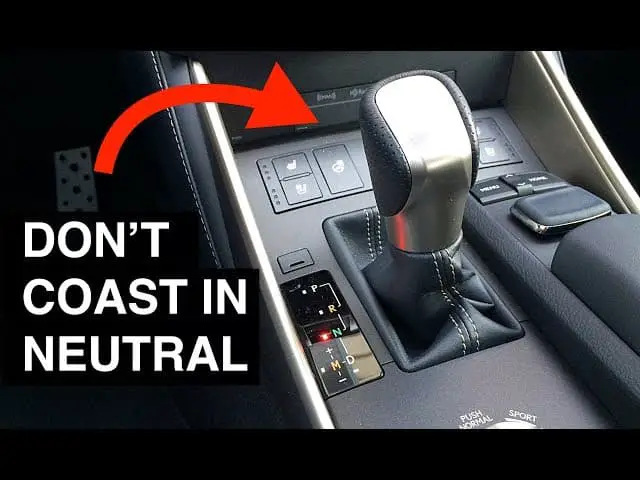If you’ve ever been in a situation where you’re stuck on the side of the road and need to get your car going again, you know that putting your car into neutral can be one of the best last-ditch efforts!
Let us see first how to put a car in neutral without starting it:
How to Put a Car in Neutral Without a Key?
To put a car in neutral without a key, you need to fully depress your clutch pedal and then shift your gear knob into Neutral. This procedure is the same whether you have a manual or automatic car.

Let us analyze in detail how to put a car in neutral:
How to Put a Car in Neutral?
Here are some handy tips for how to put your car into neutral:
- First, get your vehicle to the side of the road. Then, put your car in park and turn off the engine. Next, make sure you’re on a level surface. If you’re on an incline, put blocks under your wheels to bring that side up to level with the other wheels. Finally, if you have a manual transmission, put it into first gear and take your foot off the clutch pedal.
- Get out of the car and drop something heavy from the roof of it. If your vehicle has a button on the wall in the backseat that will decrease the top (as many convertibles do), use that. If not, grab something heavy (like a floor jack) and stand outside the car. Open your door and lay the object on top of it. Shut the door and press down on the trunk to close it all the way; this will put a lot of pressure on your roof.
- With that pressure holding the roof in place, climb up on top of the car and pull off the soft top. This may be a little difficult if you have a hardtop instead of a softtop, but it should still be pretty straightforward.
- Remove the screen from your defogger duct or other car vents that run to your engine compartment.
- Take out loose screws, remove any clips holding them in place, etc.
- Find a long wrench to reach your small block and loosen the bolt holding it in place. Please take note of the timing marks so you can put them back when you’re done!
- If your steering column is locked, remove the key and drop the parking brake lever at least halfway down to disengage the brake.
- Set your car in neutral and obliterate the engine belt from the engine pulley.
- With the engine belt removed, use one hand to hook the steering column lock and, with the other hand, lift on it to disengage the parking brake.
- Put your foot on the clutch pedal and put all your weight into it while turning your steering wheel so that you’re pulling straight ahead while using a little pressure to pull up on the clutch pedal.
- With some pressure on the clutch pedal, turn the steering wheel until you feel the car move (about three or four complete turns).
- When it starts to move, release some of your pressure on the clutch pedal and ease off on it so that you are neutral and moving forward.
- To get going again, put your foot back on the clutch pedal and start pulling it in to get back into gear.
- If you have power steering and feel your car doesn’t want to turn over the engine again, try turning it the other way instead.
- If you are driving a stick shift and can’t get the car into neutral, try putting the car in reverse and pulling on the clutch. It should move back a tiny amount (just enough to disengage). Then, put it back into a park and try turning it over again.
- If you have power brakes and feel like they aren’t working anymore while turning the steering wheel, try putting your foot on the brake pedal. It will move backward a little bit as well.
- If you have power steering or power brakes and aren’t quite sure what it is about them that isn’t working, try pushing on the brake pedal as if trying to stop your car from moving forward (while still turning your vehicle).
- If you have a manual transmission and aren’t quite sure if the parking brake is engaged, try pressing down on the brake pedal. If it doesn’t move very far and keeps your car from moving forward, it’s involved. If not, try pushing the parking brake lever if it won’t move or push the pedal down further.
How to put the car in neutral with a dead battery?
If your car’s battery is dead, you can put it in neutral by inserting your key into the ignition and turning it to “On” (in some models, it is in the “Acc” position). Then, depress the brake pedal fully. Finally, move the shift selector to neutral.
Now let us see how to put a dead car in neutral in detail:
If you’re stuck in the middle of nowhere and your car battery is dead, taking it out of gear will tell your car to use auxiliary power. This is a little tricky to pull off (especially if you have a stick shift), but it can be done!
- Unlock your car and remove the key.
- Check your floor mat to see if your engine is still running. If it is, when you put the battery back in, it will also restart. Note that this won’t work in every situation, but it will work more often than not in cases where your car battery is completely dead—like being stuck in the middle of nowhere!
- Find a good place to put your battery (try to make sure you put it somewhere dry and secure because when you move the car again, the battery will be on the floor).
- Drive over to a safe place where you can try starting your car again. Make sure everything is plugged in correctly, and flip your parking brake lever so that you can select drive after you insert the key into the ignition and turn it.
- Insert the key into the ignition and turn it. If you have a manual transmission, depress the clutch pedal, so your car starts moving.
- Turn the steering wheel until your car is neutral. For some reason, it seems easier to do if you are in reverse!
- Put your car in park and wait for it to come back on (you may need to try several times before it will come on, but eventually it should!)
- Take the old battery out and put your new one back in!
Now, if you’re wondering how to get rid of a dead battery and are considering taking it to an auto repair shop for a replacement… don’t be! Many people say you can’t jump-start a dead battery in the winter, but I’ve done it. Just be careful; letting the car sit for a few minutes is a good idea to ensure it’s fully charged.
Does putting your car in neutral save gas?
No, if you put your car in neutral, you will not save gas and will cause additional engine stress or damage. Usually, you will waste gas by putting your car in neutral because, at that moment, the injector will rise from 0 to 5 percent.
When you put the car in neutral, the driving engine begins to work harder to prevent stalling. This is a dangerous practice that will not save fuel.
The thought created this myth that you can save gas if you drive in neutral mode and that the engine is idling and consuming minimal fuel while driving in neutral mode. However, the latest studies show that the situation is quite the opposite.
If you accidentally put the car in neutral while driving, you can cause engine damage. However, if this is not your regular practice, usually, you will not damage the engine the first time.
Conclusion
This is just an essential guide on jumping-starting your car, but I hope it helps anyone needing it! Now that you know how to jump-start your vehicle, you can be a hero and get someone else’s car running. Just ask first because someone else’s car might be more expensive than yours!
